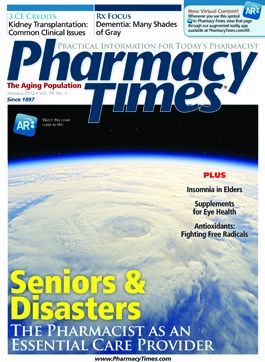Publication
Article
Pharmacy Times
Welcome to Pharmville: Virtual Community Puts Theory into Practice
To apply and refine their interaction skills, Australian and Malaysian pharmacy students at Monash University visit Pharmville, a virtual community exposing them to a variety of patient situations.
According to a study published in the November 2012 edition of the American Journal of Pharmaceutical Education, the bachelor of pharmacy program at the school’s Melbourne and Bandar Sunway, Malaysia, locations have used the Pharmville virtual community since 2008. By 2010, half of first- and second-year pharmacy students and onefourth of third- and fourth-year students used the resource, researchers stated.
The program, which features video vignettes, drug structure images, photographs of virtual community members, health profiles, and medical and social histories, emerged following an earlier program review. The review determined the need for additional application of pharmacy theory to patients, as well as better integration of knowledge between curriculum disciplines.
The module was designed for use as required during a semester-long course. In addition to the patient profiles, the module includes a virtual community pharmacist and a maternal and child health nurse as role models and resources for students.
Researchers evaluated the module using student feedback questionnaires, a student and staff evaluation, a student observation during the module’s introduction, a student focus group, a student assessment of an additional hypertension counseling model, and feedback from 2 of Australia’s professional pharmacy organizations.
The videotaped focus group revealed a connection with Pharmville patients during the orientation period, and allowed students to create context for the patients. Although researchers noted that unit content in the first and second year curricula have been reorganized and questions pertaining to integration with studies and use to pharmacy practice have been removed from feedback forms, results from 2007 to 2009 showed a positive response from students.
In addition, researchers found staff integrated 21 of the 27 Pharmville characters into approximately 40% of first- through third-year courses. Staff reported using character profile information most frequently, with overall use of the resource being almost equal between pharmacy practice and science units.
“Pharmville resources allow academics to bridge the gap between theory and application by providing authentic but accessible cases typical of those encountered by pharmacists in Australian urban communities,” researchers noted. “Consequently, first-year students are able to appreciate the reasons a pharmacist needs to know the scientific concepts they are learning, and how those concepts are applied.”
“With exposure to the pharmacist role model and the complex realistic cases of Pharmville, pharmacy students are able to progressively define and construct their professional identity, and their work, both in the classroom and in experiential settings, takes on greater meaning,” researchers concluded.







